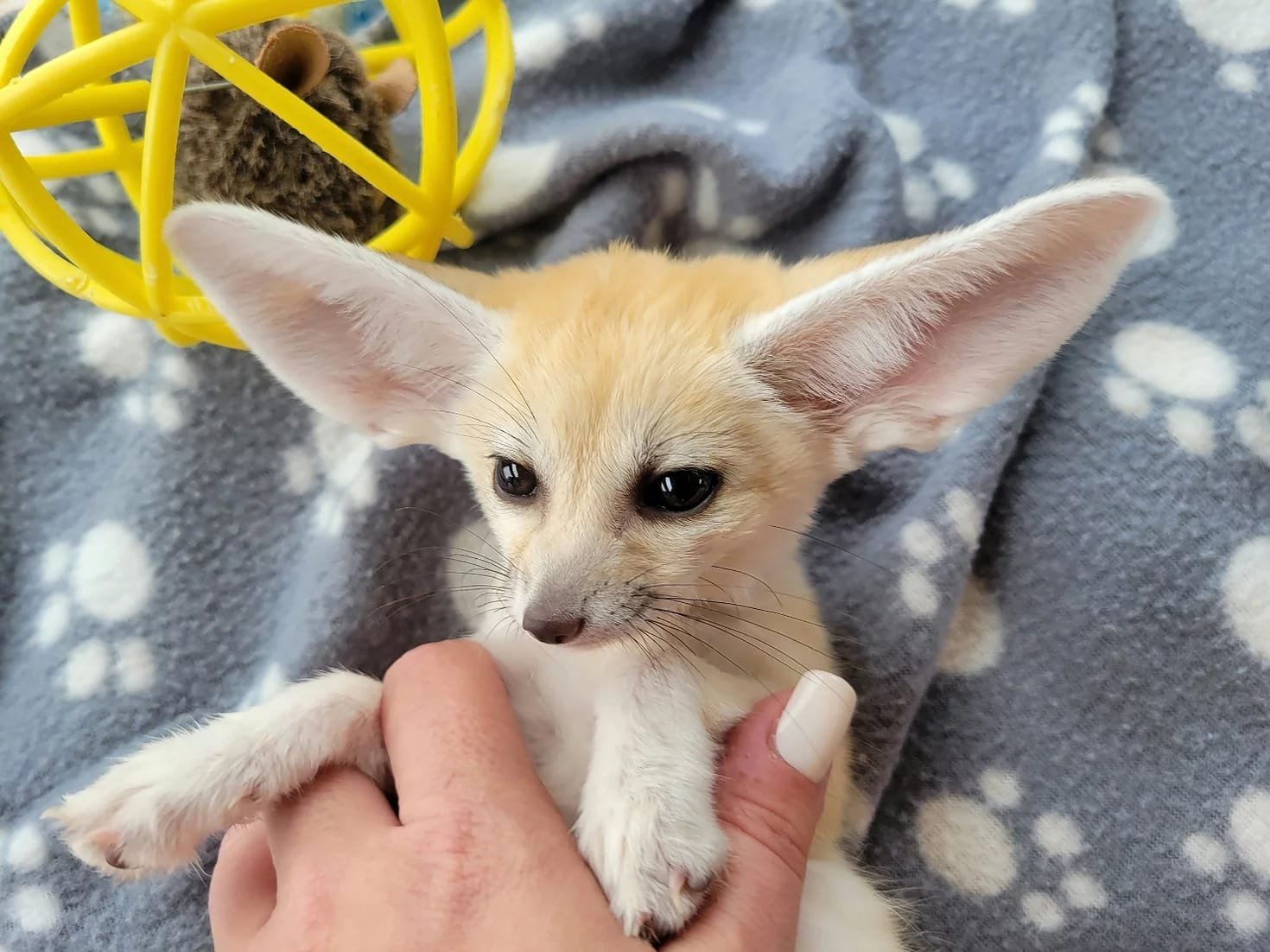- You have no items in your shopping cart
- Subtotal: $0.00
FEMALE FENNEC FOX
$1,800.00
FEMALE FENNEC FOX
Female Fennec foxes are adorable desert dwellers just like their male counterparts! Here’s a breakdown of their key characteristics: FEMALE FENNEC FOX
Size and Appearance:
- Smaller than males: Females are generally a bit smaller than males, although the difference is subtle.
- Female head-to-body size: 34.5 to 39.5 cm (13.6 to 15.6 in)
- Male head-to-body size: 39 to 39.5 cm (15.4 to 15.6 in)
- Similar features: They share many physical characteristics with males, including:
- Exceptionally large ears – the Fennec fox’s most distinctive feature! These large ears help dissipate heat in the hot desert environment.
- Big, dark eyes – perfect for seeing at night when they are most active.
- Soft fur – typically a light sandy or fawn color for camouflage in the desert.
- Slender bodies and long tails – well-adapted for navigating sand dunes.
Social Behavior:
- Live in family groups: Fennec foxes are social creatures and live in family groups that typically consist of a breeding pair, their kits (pups), and sometimes other adult offspring.
- Cooperative breeding: Both males and females participate in raising the young. This cooperative effort helps ensure the survival of the kits in the harsh desert environment.
- Dominant females: In some Fennec fox groups, females may be slightly dominant over the males.
Reproduction:
- Mating season: Fennec foxes typically breed between January and April.
- Gestation period: The gestation period lasts around 50-52 days. exotic animals for sale
- Giving birth: Females give birth to a litter of 1-4 kits, with 2 or 3 being the most common.
- Raising the young: Females are the primary caregivers for the kits, but males will also help with nursing, feeding, and protecting the young. The kits will open their eyes after 8 to 11 days and be weaned around 60 to 70 days old. FEMALE FENNEC FOX
Interesting Facts:
- Female Fennec foxes are excellent diggers. They use their sharp claws to dig underground burrows that provide shelter from the hot sun and protect their young. buy fennec fox
- They have excellent hearing, which helps them locate prey like insects, rodents, and lizards buried beneath the sand. FEMALE FENNEC FOX
- Unfortunately, habitat loss and the illegal pet trade threaten Fennec fox populations, including females.
While females may be slightly smaller than males, they play a vital role in Fennec fox reproduction, raising young, and maintaining the social structure of the family group. FEMALE FENNEC FOX








Customer reviews
Reviews
There are no reviews yet.
Write a customer review